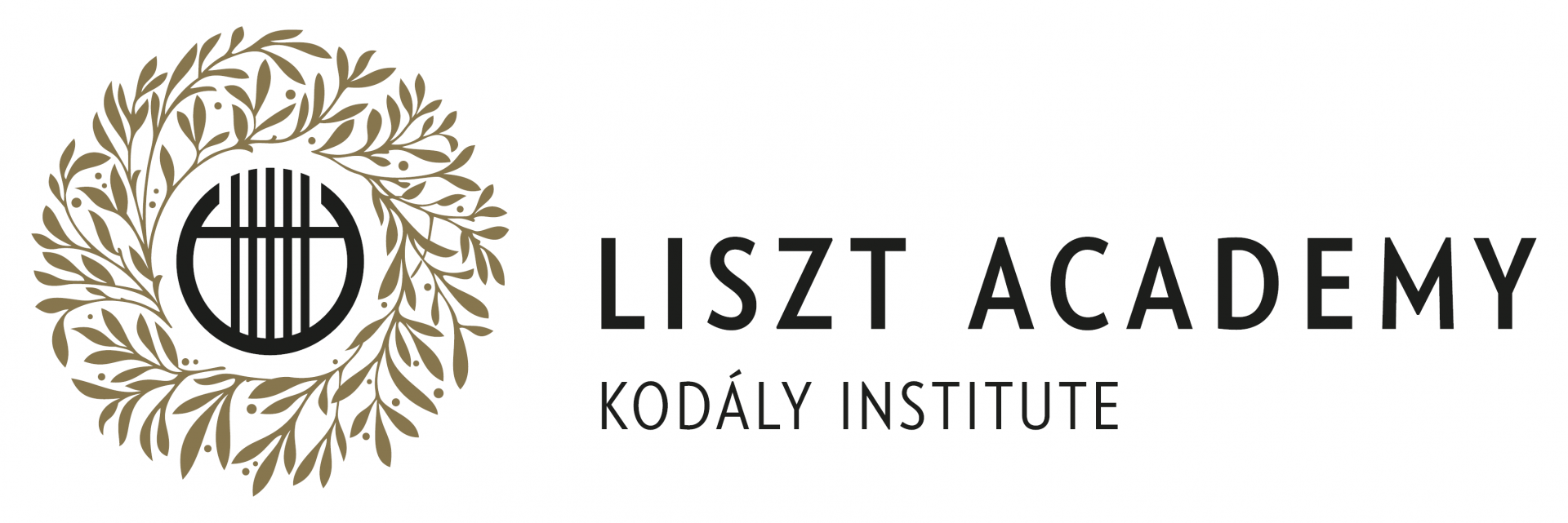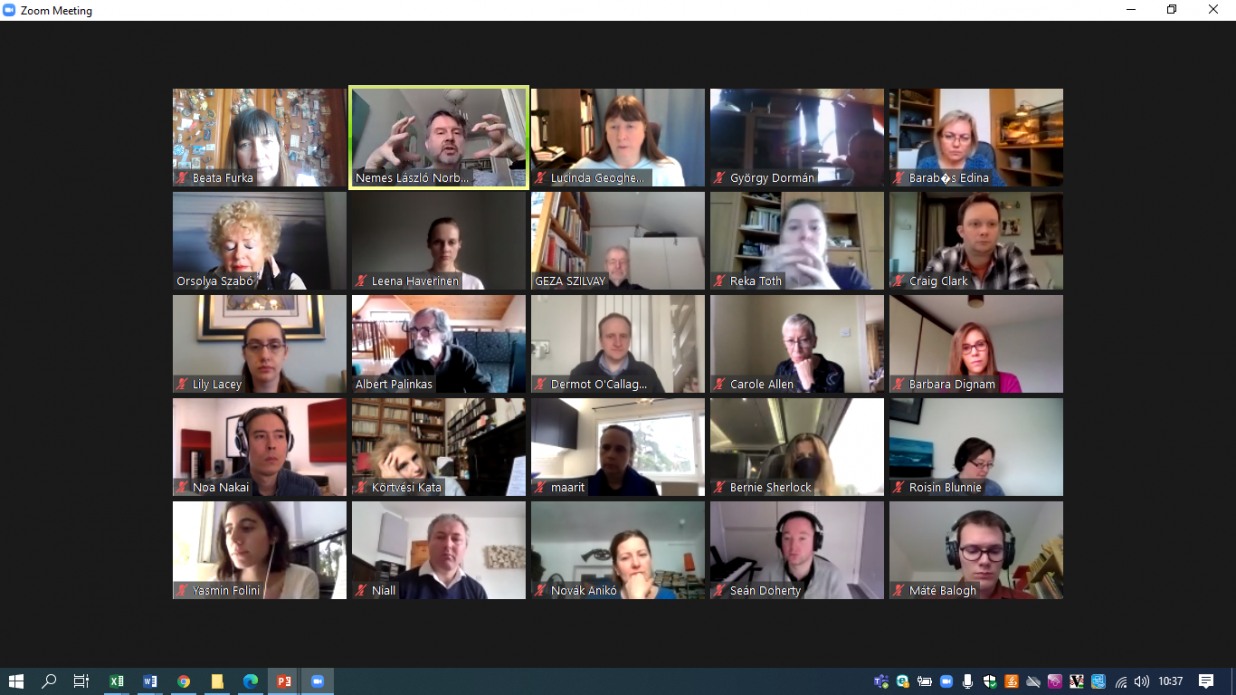PRESTO - Ttransnational Project Meetings
Day 1 (9 February, 2023):
This day was dedicated to the review of project and the outcomes, to the review of dissemination, the PRESTO deliverables website, how the Quality Assurance worked. The day closed with the review of the project budget.
The partners had a long discussion on how the main objectives of the project have been met and fulfilled, the impact of the joint work on their own organisations, the pitfalls and joyful moments of the production of the materials.
The overview on the actual stage of the project and how the closing - including the compilation of the Final Report - will be done were discussed, and the budget and the calculation of the final numbers within the remaining 20% funding was analysed. The Communication Subcommittee reported about the use of various social media platforms (Facebook, Twitter, Instagram) and the project’s microsite on the consortium leader’s website (kodaly.hu/presto).
The current items have been carefully checked and if needed modified, while the missing items were placed to the PRESTO site (https://kodalyhub.com/presto) to get ready for the next day presentation.
Day 2 (10 February, 2023):
The second day of TNPM4 was dedicated to the presentation of the intellectual outputs of ALL consortium member institutions.
Each partner fulfilled the undertaken sections and videos, methodology notes, scores and everybody was really deeply impressed by the richness, diversity and modernity of the produced resources. The brilliant design and the easy navigation of the site was also highly praised.
The rest of the day was spent with rehearsing for the Multiplier Event 1 next day and the discussion on the forthcoming multiplier events in the other 3 countries (profile, mode, target groups, content, etc.)
In overall, the parties have confirmed and reassured that the PRESTO project was progressing very well, the quality and the diversity of the materials produced have exceeded the expectations, there was no delay, no conflict, the team spirit remained exemplary throughout the entire project.
The first meeting in in-person setting was a revelation after having the first two meetings online.
Day 1 (13 October, 2022):
This day was dedicated to the introduction of the Hungarian music education system and the digital developments of the Kodály Institute, and the presentation of the Intellectual Output videos started.
The Kodály Institute of Liszt Academy of Music is responsible to produce resources in all three strands (IO1 classroom, IO2 choral, IO3 instrumental strands).
The experts presented either as a live performance (such as the choral piece composed by the Hungarian composer participant, and rehearsed by the Institute’s female choir conducted by the Hungarian choral conductor IO2 expert), or excerpts from the previously recorded and edited materials covering the themes of IO1 and IO3.
In IO1 the Kodály Institute has produced videos suited for classroom music teachers to provide them with resources on the active music listening examples (online and offline with five different lessons mirrored, with a detailed explanation of the various pedagogical goals). In addition, singing based ear training exercises (online and offline arranging Kodály music reading exercises booklet), online and offline solfége lessons for various age-groups from early ages to young adults have been recorded and being under translation, editing. There is a recorded on-line classroom session of creative, self-exploring music teaching through poetry, the rhythm and musicality of the language.
In IO3 the goal is to make students engaged even on-line with the creative instrumental pedagogy videos (with embodiment in the focus and various creative approaches). Through piano, wind and percussive instrument creative sessions the experts while taking elements from the Sáry method, the Kokas pedagogy, the SZO-System create useful resources for the music teachers of various age groups under different settings.
A chapter is under final editing and translation about a package to the parents, to explain how to prepare the children and their environment (IT infrastructure, home settings, mental and emotional support) for various instrumental on-line lessons at home.
Day 2 (14 October, 2022):
The second day of TNPM3 was dedicated to the presentation of the other consortium member institutions’ intellectual outputs.
Under IO1 (classroom) the Scottish partner NYCOS presented examples of the series of altogether 45 short solitary singing games video recordings of various children’s songs + games originating from various countries in order to highlight the diversity of song repertory. Originally categorised the songs by age-groups, but modified it to level of difficulty since the music education background of a child will largely determine his/her ability to learn a song and a game. The videos were recorded under a comfortable home environment, so that children under lockdown can easily familiarize with the situation. The description of the games has been tested not only with regular kids, but those with special education needs including autistic children, and modified accordingly. They also considered the other extremity and produced singing games for the highly talented kids. The British Sign Language version of some selected songs will run parallel on the same screen.
Under IO2 (choral strand) one of the Irish partners DCU has produced a series of videos on the use of spectrographic technology together with a “getting started” introduction. Each video outlines a specific concept and guides the users in how to exploit this special and spectacular tool to improve individual vocal sound, how to remedy vocal issues, and enhance choral sound balance. The canon repertory composed by young composers from DCU has been completed, with nine brand-new pieces, added to seventeen pre-existing canons dedicated to specific musical challenges and concepts, and for each of the canons, 5 attractive guidance videos are provided in a carefully considered learning process. The videos contain various support features such as a visual of the keyboard at the bottom of the screen, or a highlighter running on the music score showing the actual note being sung. Another chapter, the use of MuseScore software in improving intonation and various intonation awareness exercises has been incorporated in the resources.
Sing Ireland has completed the recording of the videos, they are under postproduction. As a subsection within the PRESTO choral strand they have created further substrands, i.e.
Strand 1: Conducting Technique covering Basic Level 1 and 2
Strand 2: Repertoire Selection
Strand 3: Score Preparation
Under IO3 (instrumental strand) the Finnish partner Caprice has produced the individual videos covering the major themes (Note reading, Rhythms, Relative sol-fa system leading to the absolute system) under the umbrella title of “Kodály Inspired String Teaching”. The videos consist of full remote sessions of instrumental teaching and in-person settings as well.
The issue of how colour-blind people can enjoy the videos of the various strands has been raised.
The accompanying pedagogy and methodology materials will be standardized by a unified graphic design that follow the project visual identity plan. The style will be supportive, explanative but short and easy, rather than academic, lengthy, essay-like.
The publication of the final materials on the Kodály HUB site needs a thorough preparation from the developer and designer of the KodályHUB. This is in progress along with the site-map draft. Further on-line meetings will be organised to finalise this topic.
The Communication Subcommittee reported about the use of various social media platforms (Facebook, Twitter, Instagram) and the project’s microsite on the consortium leader’s website (kodaly.hu/presto), where the description of the project, the participating institutions, the experts, managers is available along with the reports and pictures of the various activities.
The communication plan is based on a rotation among the five participating institution to regularly create posts and contents.
The partners have confirmed the dates for the remaining project activities and Beata Furka presented the current status of the project and explained the expectations, the verification of participants and the financing thereof of the Multiplier Events. The mode of the events (in-person/hybrid/on-line) in the countries are not yet finalised, originally some of them have been planned as CPD events, this may change during the forthcoming months.
In overall, the parties have agreed (and the survey made after the meeting confirmed) that the PRESTO project is progressing very well, the quality and the diversity of the materials produced so far have exceeded the expectations, there is no delay, no conflict, the team spirit is exemplary.
The first two project meetings were held online as travel had still been considered risky under the actual Covid-19 restrictions.
The first TNPM was the kick-off meeting held between 26-30 April, 2021, with various short sessions scheduled for each day. It was of vital importance that all participants get to know each other, acquire a clear understanding of this rather complex project and set the foundations for creating uniform materials.
The topics were divided into 6 small session meetings, in order to maintain effectivity. We truly missed the opportunity of personal discussions with all the motivating and sparkling ambiance that goes with it, nonetheless we can say that the session meetings also provided a safe and inspiring environment for meaningful discussions.
The TNPM1 is always crucial in terms of creating a common understanding. Though the institutions involved in the partnership have had certain contacts before, not everybody knew each other personally before. Luckily, the majority of the participants have been involved in the completion of the submitted application, so in most of the time we could focus the discussions on the issues of implementation.
The context of a Strategic Partnership project has been explained, along with the financial mechanisms, and the duties of the project managers. The Preventive Monitoring issues were also discussed in details.
2 subcommittees were formed: one for the technicians led by Noa Nakai (Finland) and the communication task force led by Réka Tóth (Hungary).

The second meeting held on 27-28 November, 2021 was disturbed by the electricity shortage caused by storm Arwen in Scotland just before the day of the meeting.
The focus of TNPM2 was the overview of the progress of the project, the activities accomplished in the first seven months, and the main achievements, i.e. the project key visuals, the migration of all project materials to Microsoft Teams and the progress with the Intellectual Output development in all 3 strands.



